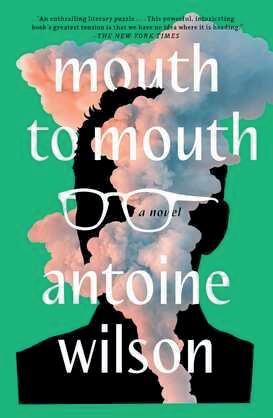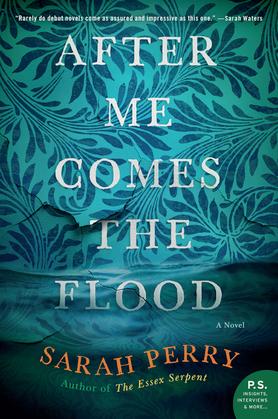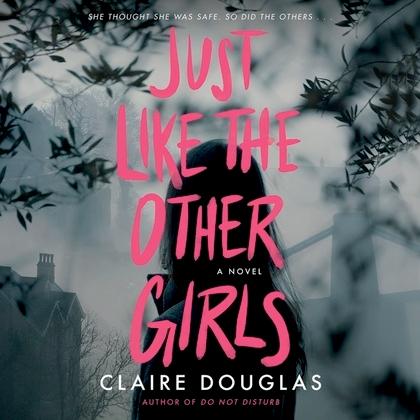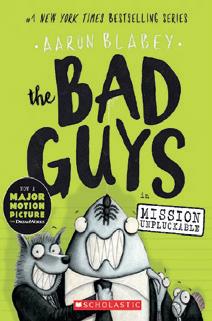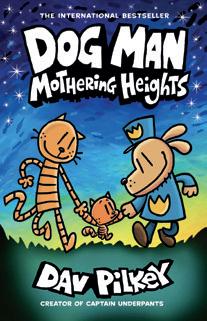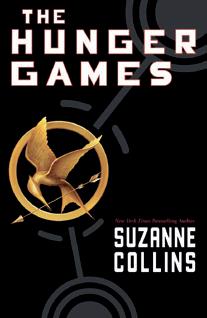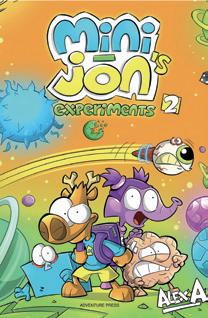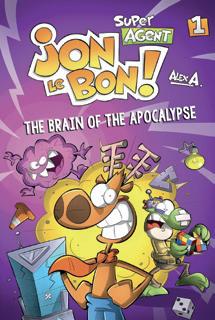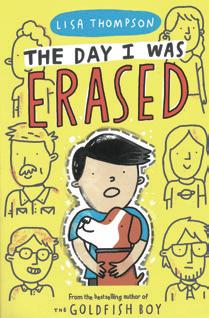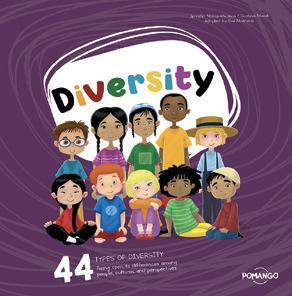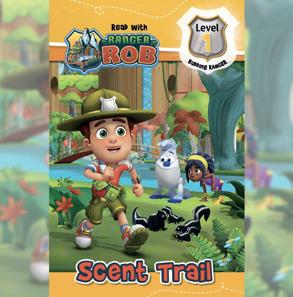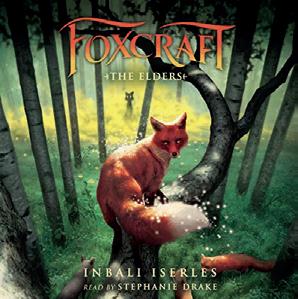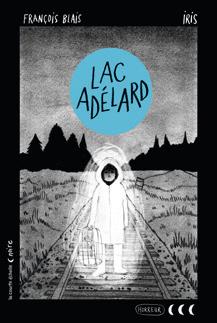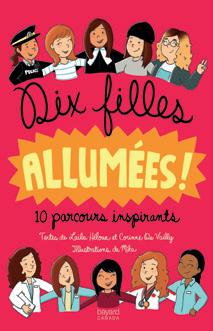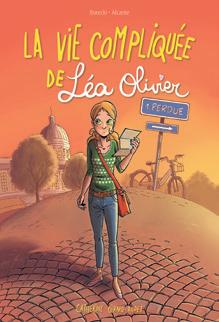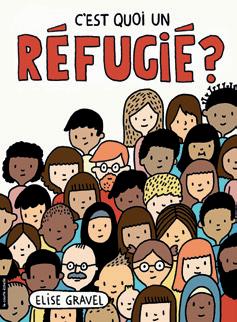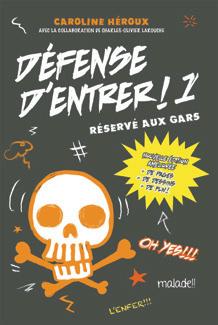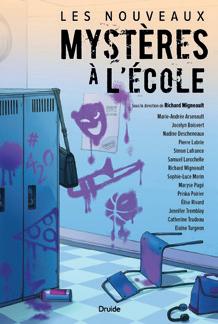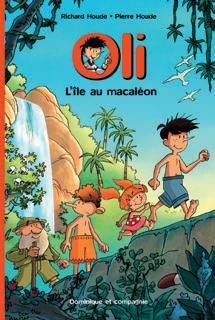REVOLUTIONIZING EDUCATION: HOW AI CAN EMPOWER TEACHERS IN THE CLASSROOM



Support beginning readers with engaging books and learning resources from the Crabtree Little Honey phonics collection! These bright and colourful books help build reading skills from the ground up highlighting the sounds and letter combinations of vowels and consonants to progressing to short sentences and stories. Crabtree Little Honey books are essential classroom resources for phonics instruction to help students become successful readers!
Entertaining and brightly illustrated books with fully decodable text in the My Decodable Readers series features highfeatures round out this collection along with Downloadable Teacher Notes to aid in instruction.


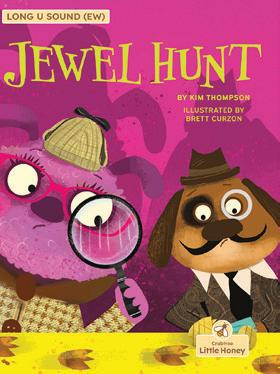
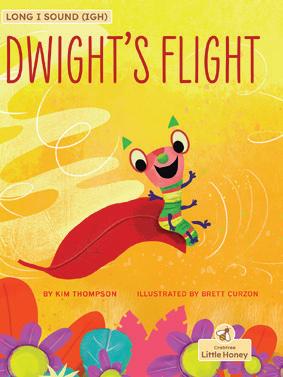
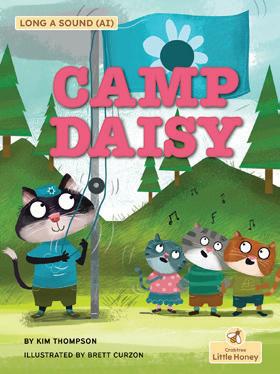
My Decodable Readers – Gr PreK-2 | 20 titles
Simple sentences in the My Phonics Readers collection feature decodable words in simple sentences that relate to colourful images on each page. The interactive format in these books highlights engaging illustrations and questions that allow the reader to develop their fluency and phonics skills.
My Phonics Readers – Gr PreK-2 | 64 titles

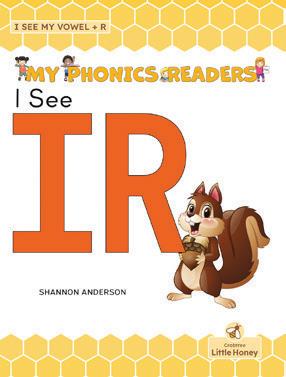
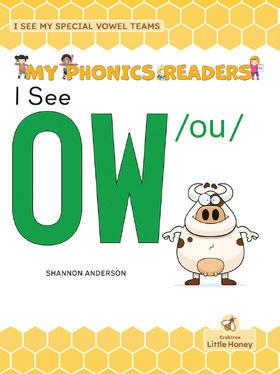


The My Phonics Words book collection gives examples of words that include the same sound along with relatable pictures that reinforce letter-sound connections. Learning activities support comprehension and encourage further phonics knowledge.

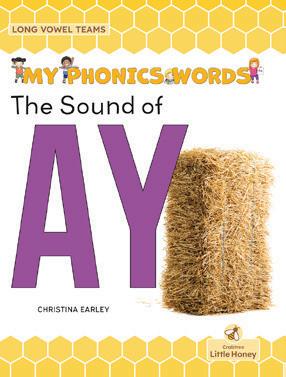
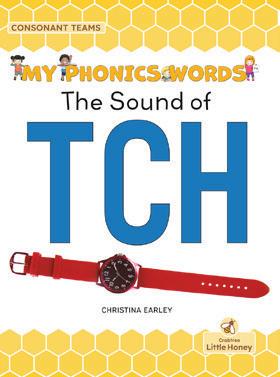
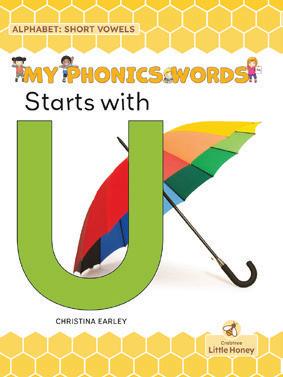
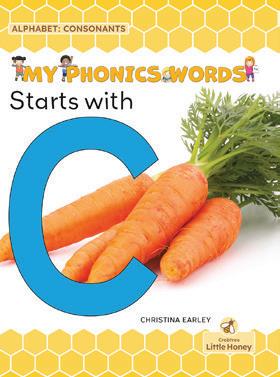
My Phonics Words – Gr PreK-2 | 105 titles
Crabtree Publishing is a trusted source for nonfiction and fiction books for grades PreK-9+.



Funny illustrated stories engage beginning readers while supporting them with learning resources and bonus features. Fully decodable text features high-frequency words, and words with different sounds combined with selected consonant letters. Downloadable Teacher Notes available.
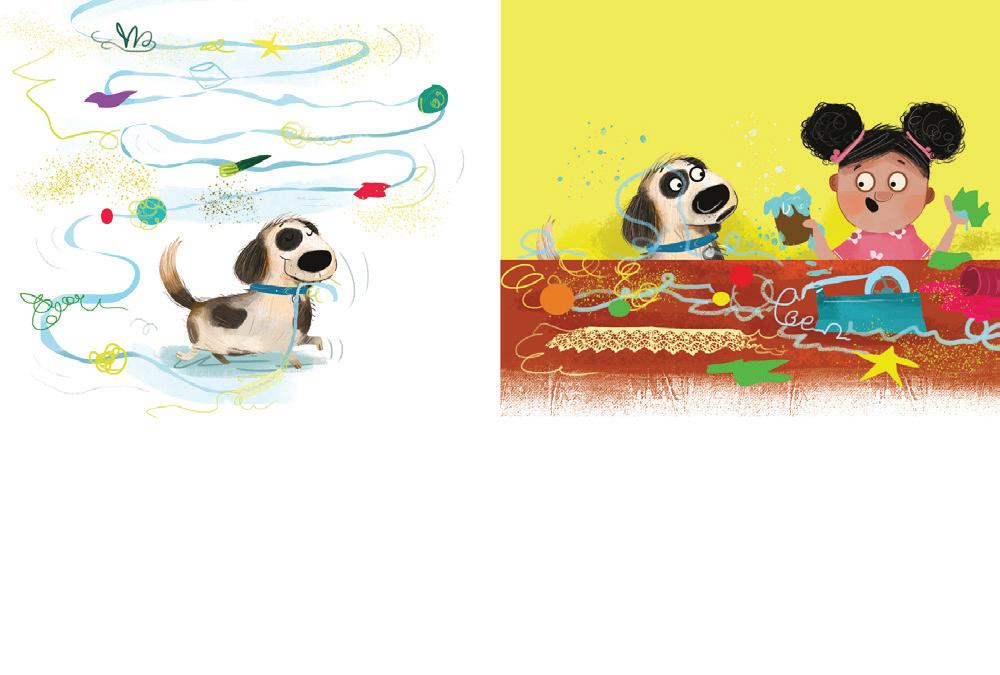
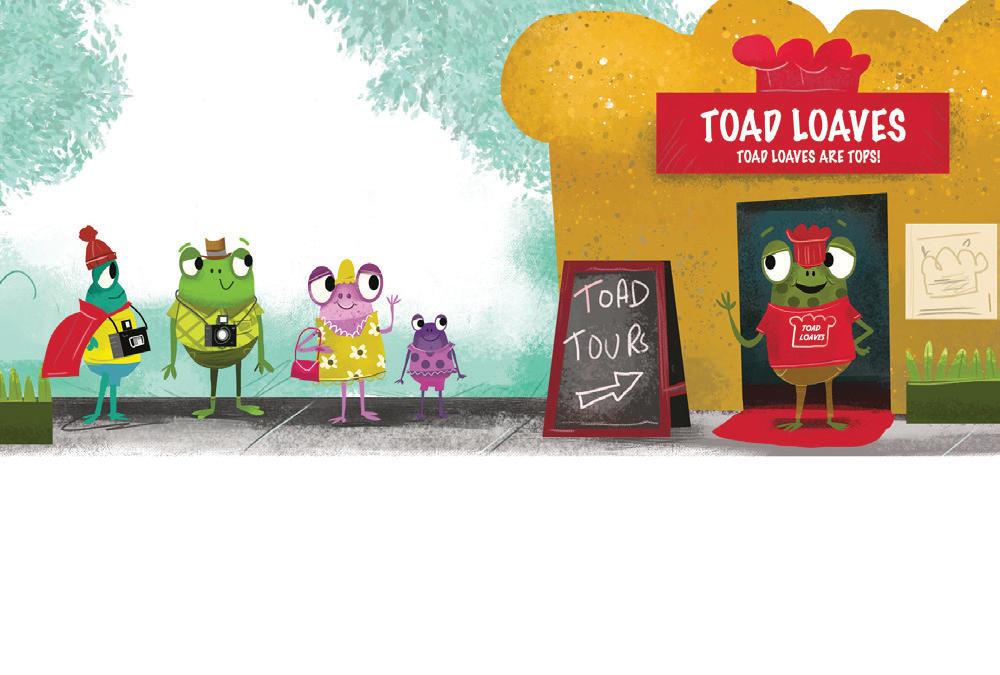

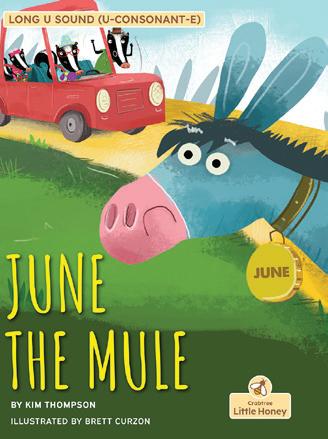
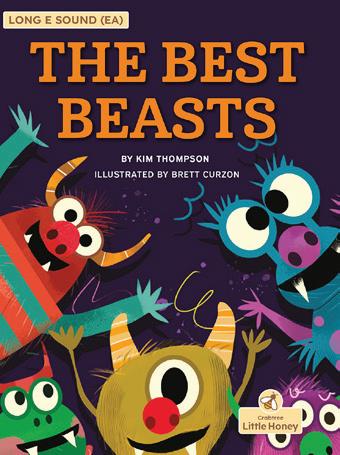
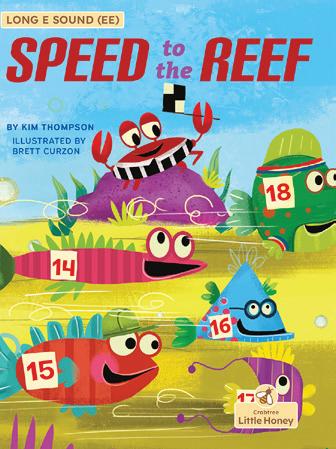
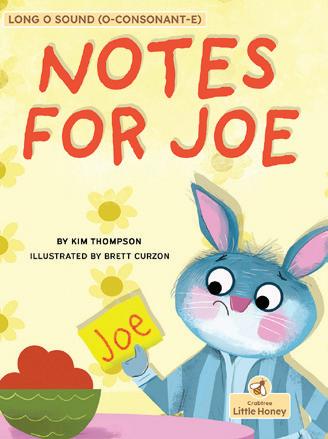
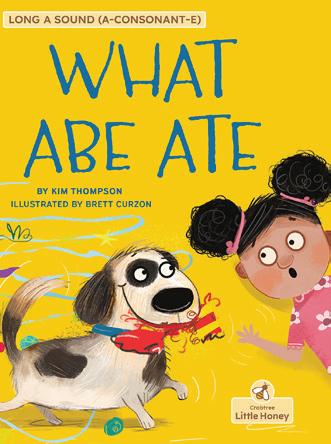
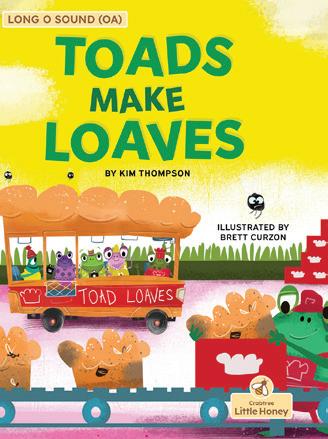
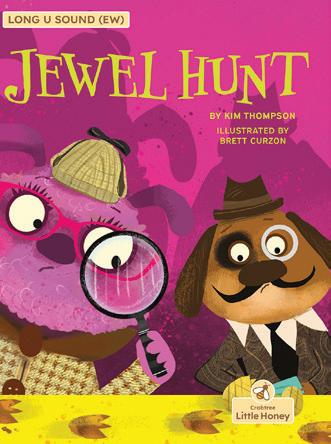
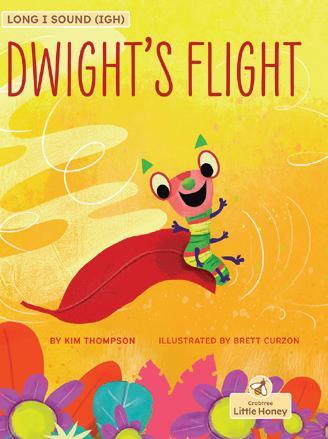
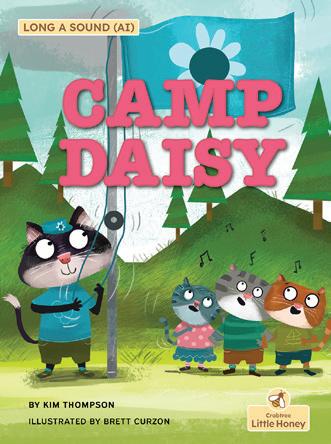


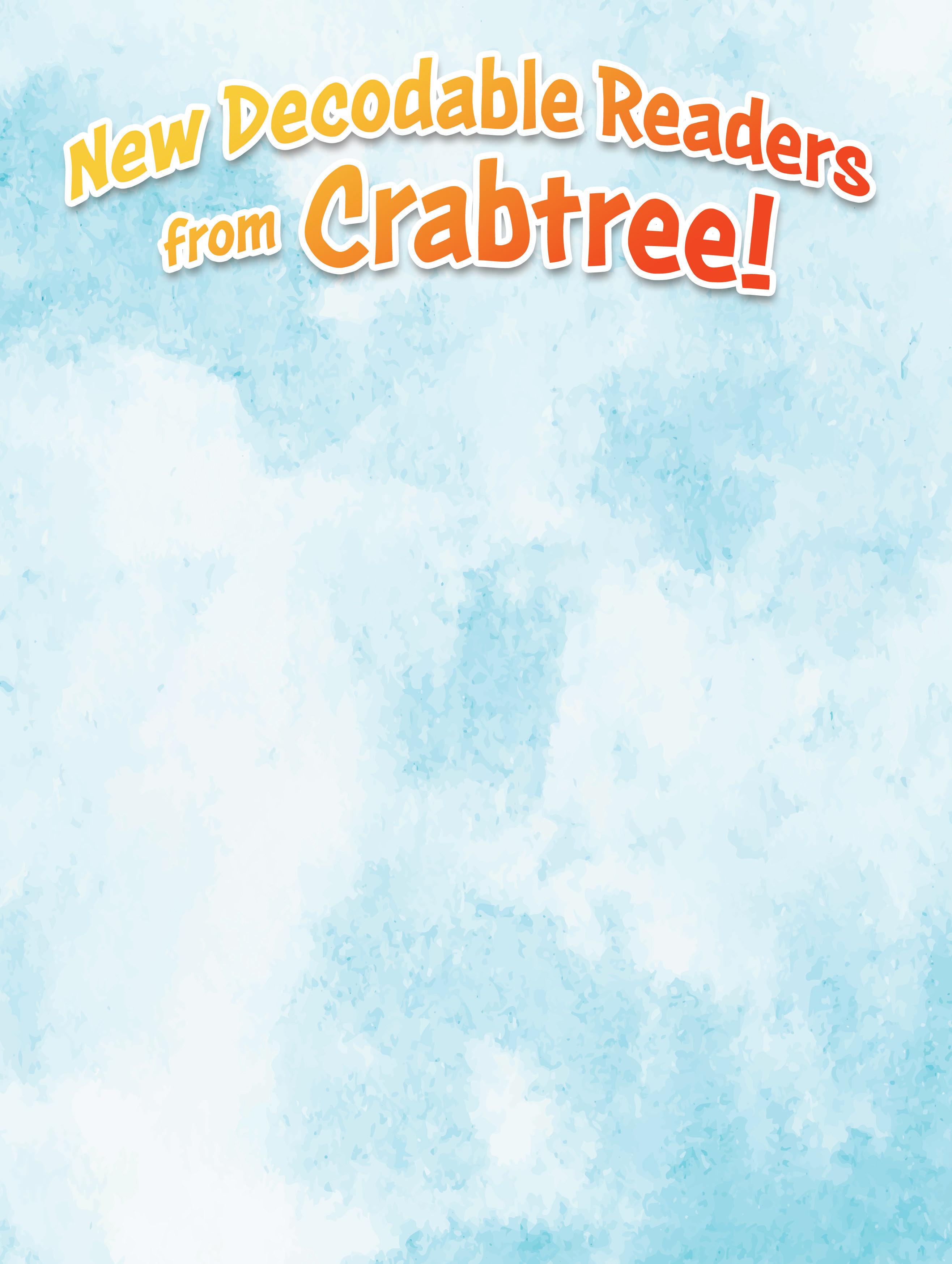

Leaves are changing, bells are ringing, and the sound of laughter is once again filling the halls. That’s right, school is officially back in session, and we want to help you start the new year off on the right foot! To do so, we’ve centred this issue around a variety of new and creative ideas that can be brought to the classroom.
First, Adam Stone takes a look at the emerging field of AI and how it can benefit educators. From generating lesson plans and writing prompts, to drafting recommendation letters and email responses, AI has the potential to be an enormous time-saver for teachers. It is important to be aware of potential biases, however, and how they can be magnified through the use of AI. As Stone stresses, it is crucial that educators receive training on how to properly use AI, so they can reap its many benefits.
The subject of bias is something that visual arts teacher Nikita Griffioen emphasizes in her high school Art Activism class. In her Classroom Perspectives piece, Griffioen explains how her students learn to address their own biases and encourage others to do the same through their artwork. Over the course of one semester, the students create a large-scale piece of art based on a social justice topic that was discussed in class. These artworks are displayed at a local gallery, where students can invite members of the community to share in their learning. In recent years, Griffioen’s class has even partnered with the University of British Columbia’s Art Justice class, along with Corrections Canada, to facilitate collaborative paintings started by Indigenous incarcerated individuals, and completed by her high school students.
As Martha Beach also shows, this type of cooperation and collaboration between groups of different ages and life experiences can have many benefits for everyone involved. Her article delves into the exciting world of intergenerational learning, where students and seniors learn and grow together. Socialization between the older and younger generations can help students develop a sense of responsibility and improve their self-esteem, while also allowing elders to share wisdom and knowledge. Even an activity as simple as reading books together can be a rewarding experience—one that also hits several curriculum targets.
If you’re looking for some new and unique book recommendations, be sure to check out our latest Bookstuff column. This one is all about animals! With World Animal Day fast approaching on October 4, there’s no better time to initiate discussions about endangered species, conservation, and biodiversity.
More useful books can be found in this issue’s CURRICULA. Its ready-to-go lesson plan utilizes a combination of middle-grade fiction and nonfiction books to get students thinking about refugee experiences.
Lastly, why not indulge in some festive, fallthemed fun with your students? For our Field Trip column, we’ve compiled a list of six extraordinary hay mazes across Canada and the United States that are well worth a visit. You won’t want to miss this “strawsome” activity that’s fun for everyone!
See you next time.
KELSEY MCCALLUM ASSISTANT EDITOR08 17 06 20 23 14
FEATURES
Revolutionizing Education: How AI Can Empower Teachers in the Classroom
Adam Stone
Intergenerational Learning: A Way for Everyone to Shine
Martha Beach
COLUMNS
Bookstuff
Wildlife
12 Field Trips Mazes
Classroom Perspectives
Art as Activism: Change Beyond School Borders
Nikita Griffioen
Teacher’s Pet CURRICULA Global Issues: Refugee Experiences
Kate Johnson-McGregor
PUBLISHER AND EDITOR

Wili Liberman
MANAGING EDITOR
Lisa Tran
ASSOCIATE EDITOR
Raenu Sarathy
ASSISTANT EDITOR
Kelsey McCallum
EDITORIAL INTERN
Nupur Bagoria
CONTRIBUTORS
Martha Beach
Nikita Griffioen
Kate Johnson-McGregor
Adam Stone
ART DIRECTOR
Pauline Lopez
JUNIOR GRAPHIC DESIGNER
Amos Chin
EDITORIAL ADVISORY BOARD
Bernice Slotnick
Teacher (Retired)
John Myers
Curriculum Instructor, OISE (Retired)
Rose Dotten
CEO and Head Librarian, Shelburne Public Library
TEACH is published by 1454119 Ontario Ltd. Printed in Canada. All rights reserved. Our contact info is: 1655 Dupont St., Suite 331, Toronto, ON, M6P 3T1 E: info@teachmag.com T: (416) 537-2103. For subscription info, visit shop.teachmag.com. Unsolicited articles, photographs and artwork submitted are welcome but TEACH cannot accept responsibility for their return. Contents of this publication may be reproduced for teachers’ use in individual classrooms without permission. Others may not reproduce contents in any way unless given express consent by TEACH. Although every precaution is taken to ensure accuracy, TEACH, or any of its affiliates, cannot assume responsibility for the content, errors or opinions expressed in the articles or advertisements and hereby disclaim any liability to any party for any damages whatsoever. Canadian publication mail sales product agreement No. 43579512. ISSN No. 1198-7707.
With National Wildlife Day having just passed on September 4, and World Animal Day coming up a month later (October 4), now is the perfect time to raise discussions with students about animal welfare, endangered species, and the incredibly diverse array of wildlife that exists on this planet. And so, we’ve gathered a collection of books that will encourage readers to recognize different species of animals in a wide variety of environments all across the globe. These books also touch on themes of sustainability, conservation, environmental activism, and more, motivating students to consider what they can do to protect the world’s biodiversity and help save animals from extinction.
Blue Sneaker Press (September 2023)
Grade Level: 2-6
This non-fiction children’s book tells the story of two gorillas: Angela, who lives at the Los Angeles zoo, and Lulingu, who lives at the Gorilla Rehabilitation and Conservation Education (GRACE) Center in the Democratic Republic of the Congo. As young readers watch Lulingu and Angela grow, they will learn about what makes gorillas so special, and also what all of us can do at home to help protect these incredible primates. (Note that a portion of the proceeds from each book goes towards GRACE conservation efforts.)
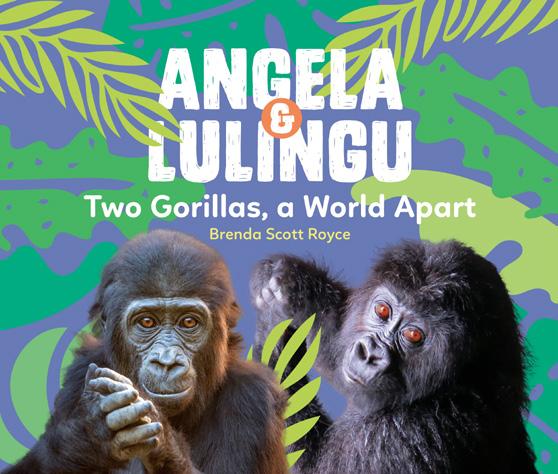
Groundwood Books (September 2023)
Grade Level: K-1
Inspired by the wildlife seen in urban areas during the early days of COVID-19, this whimsical picture book uses delightfully poetic language to describe the way animals come out when humans aren’t around. The book also serves as a reminder that we share outdoor spaces with many other creatures, and must consider how our actions impact them.

Annick Press (May 2023)
Grade Level: 5-8
Evolution Under Pressure combines STEM and social justice themes to look at how human behaviour has influenced evolution over thousands of years and how, in turn, the evolution of the natural world has impacted us— and continues to do so today. Students will come to see that everything is connected, and that by making environmentally conscious choices, we can all work to restore ecological balance. The book also includes profiles of young activists, and is accompanied by an Educator Guide
 1 ANGELA & LULINGU: TWO GORILLAS, A WORLD APART BY BRENDA SCOTT ROYCE
3 EVOLUTION UNDER PRESSURE BY YOLANDA RIDGE, ILLUSTRATED BY DANE THIBEAULT
2 THE ANIMALS COME OUT BY SUSAN VANDE GRIEK, ILLUSTRATED BY JOSÉE BISAILLON
1 ANGELA & LULINGU: TWO GORILLAS, A WORLD APART BY BRENDA SCOTT ROYCE
3 EVOLUTION UNDER PRESSURE BY YOLANDA RIDGE, ILLUSTRATED BY DANE THIBEAULT
2 THE ANIMALS COME OUT BY SUSAN VANDE GRIEK, ILLUSTRATED BY JOSÉE BISAILLON
Christy Ottaviano Books (August 2023)
Grade Level: K-3
This illustrated picture book plays a dual role of introducing students to both math and ecological concepts by focusing on one of nature’s most iconic mammals: the giraffe. How fast can a giraffe run? What are their spots for? How tall do they grow? Kids will learn all about these gentle giants through graphs, shapes, measurements, and more!

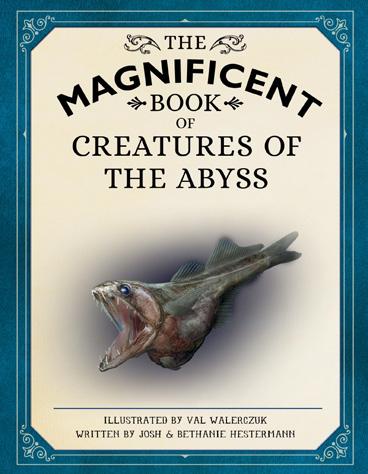 BY JOSH HESTERMANN AND BETHANIE HESTERMANN, ILLUSTRATED BY VAL WALERCZUK
BY JOSH HESTERMANN AND BETHANIE HESTERMANN, ILLUSTRATED BY VAL WALERCZUK
Weldon Owen (March 2023)
Grade Level: 7-12
Students can better acquaint themselves with the creatures of the deep through this beautifully illustrated guide. It’s filled with fascinating details about the extraordinary species that lurk beneath the surface—from goblin sharks to vampire squids—and also includes a full-page map showing where each one can be found.
Kids Can Press (May 2023)
Grade Level: 2-6
Polar offers a dazzling exploration of wildlife that has adapted to survive the coldest regions on Earth. It shows how animals on opposite ends of the planet have developed the same adaptations in order to thrive in the harsh conditions of the Arctic and Antarctica. Be sure to also check out the accompanying Activity Guide
 L. RICHARDS
L. RICHARDS
Orca Book Publishers
(October 2023, forthcoming)
Grade Level: 4-7
This non-fiction book for middle grade readers delves into the history, biology, and ecology of wild horses. Students will also learn about the relationship between wild horses and Indigenous peoples, why these majestic animals are under threat, and what young people across the globe are doing today to protect them.
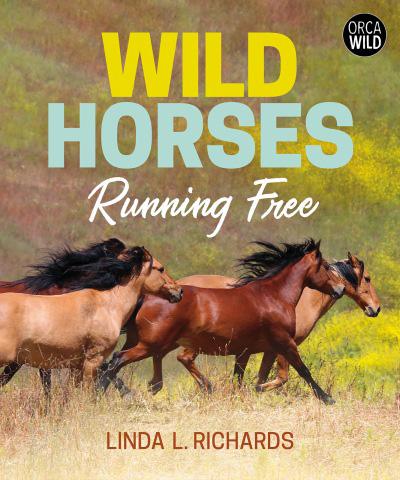
Storey Publishing (April 2023)
Grade Level: 8-12
Bestselling author and illustrator Julia Rothman presents a visual guide to the animals of the world in this charming wildlife treasury. Featuring hundreds of illustrations, Wildlife Anatomy outlines the unique attributes of animals from grasslands, oceans, deserts, and more. Each image is also accompanied by labels, identifying details, and remarkable facts (such as how bees groom each other, or which species of armadillo is the hairiest) that students are sure to delight in.
 7 WILD HORSES: RUNNING FREE BY LINDA
8 WILDLIFE ANATOMY BY JULIA ROTHMAN
4 GIRAFFE MATH BY STEPHEN R. SWINBURNE, ILLUSTRATED BY GERALDO VALÉRIO
7 WILD HORSES: RUNNING FREE BY LINDA
8 WILDLIFE ANATOMY BY JULIA ROTHMAN
4 GIRAFFE MATH BY STEPHEN R. SWINBURNE, ILLUSTRATED BY GERALDO VALÉRIO


 By Adam Stone
By Adam Stone
At KIPP BOLD Academy, a school for Grades 5-8 in Newark, NJ, educator Winston Roberts teaches financial literacy. Lately he’s been using a new tool to get the job done—Artificial Intelligence (AI).
“I wanted [students] to research a bunch of different [organizations] that have made questionable businessethics decisions,” he says. “I had ChatGPT generate a list of some of the most infamous business scandals that were instigated by profit motives, and also had it suggest Google search terms so kids could look up more information.”
In about 15 minutes he had generated a list of examples that would have taken him many hours to compile by hand. That was enough to get the kids off and running on their research.
While AI is still an emerging technology, educators and K-12 advocates say it has the potential to make life better for teachers. It will save them time, surface new teaching materials, and spark deeper classroom engagements.
The international consultancy group McKinsey reports that 20 to 40 percent of a teacher’s working hours are spent on tasks that could be automated. That’s roughly 13 hours a week that teachers could redirect toward highervalue activities. Some say AI will help them get there.
At Allendale Columbia School in Rochester, NY, Phil Schwartz is head of the upper school and also teaches computer science. He’s using AI to develop problems for his students to solve.
The AI gave him a wider list of possible problems than he could have crafted on his own. “I could use that to come up with things that I haven’t thought of before, to challenge the students in new ways,” Schwartz explains.
Across the K-12 landscape, experts point to a wide range of possible ways in which AI could help teachers save time and effort, while simultaneously also expanding their pedagogic options.

Anthony Clemons is a doctoral student in the International Technology program at Northern
Illinois University who is very interested in AIpowered assessment modules to help streamline the grading process. Once students complete an assessment, “the teachers can give students the ability to allow an AI module to grade the responses,” he says. Student can review that feedback and use it to improve their responses.
For the teacher, the AI can deliver “a comprehensive overview of each student’s performance, highlighting areas where students excel and where they struggle,” Clemons explains. “It [can] save teachers a lot of time in grading drafts, and provides the students with insights that they can use to adjust their papers.”
By using AI to generate things like lesson plans, teachers can potentially save “hundreds of hours” of prep time, says Jeff Hughes, founder of STEM-skills provider Skill Samurai.
He recently asked an AI engine to create a lesson plan that would explain how the stock market crash of 1907 led to the rise of financial services firm J.P. Morgan. Seconds later, he had a detailed plan that stated the educational objectives and needed materials, offered a step-by-step outline of the lesson, and suggested possible assessment strategies.
With a follow-up prompt, the AI generated an eightquestion multiple choice quiz on the topic (complete with an answer key), and another prompt delivered a list of learning objectives aligned to the six cognitive learning domains defined in Bloom’s taxonomy.
AI can potentially give teachers “new ways to experiment with and incorporate creativity, critical thinking, and research skills in the classroom,” explains Carlos Bortoni, global industry advisor for K-12 education at Qualtrics, whose technology solutions empower digital experiences.
“Keeping the content engaging for K-12 students is always challenging, especially while balancing statemandated requirements with the needs of individual learners,” he says. “But what if the curriculum was paired
with tech that could expand on the classroom lesson by aggregating additional learnings across [multiple] sources?”
For example, teachers could put AI to use “as the starting point for a debate on a given topic,” Bortoni suggests. With AI generating a range of viewpoints, based on student prompts, “it’s likely each group would come back to the larger group with different key arguments or learnings, igniting broader conversations and surfacing other points of view that may otherwise have been missed completely.”

At the accredited online high school Penn Foster, Chief Learning Officer Andy Shean points to a number of other potential classroom uses:
RESEARCH: “Research is an essential part of academic writing, yet it can often be a challenging and time-consuming process. AI allows students to access a wealth of information in minimal time, providing more time to develop a comprehensive understanding of their subject matter and ultimately producing higher-quality work,” Shean says.
WRITING PROMPTS: Students and teachers can use AI “to generate creative writing prompts, jumpstarting the creative process,” he notes. “For teachers lacking inspiration or students practicing their skills independently, AI can cater to specific interests and needs, and help teachers instruct a range of writing styles.”
REAL-TIME FEEDBACK: “AI tools allow for immediate feedback,” Shean says. Meaning that “as students are developing their own writing, they can get realtime feedback from the platform, when their teachers may not be available to help.”
BRAINSTORMING: “When students ask the right questions, AI can help generate new and innovative ideas to fuel creative ideas and projects,” he explains.
Teachers can also look to AI to help support collaborative learning.
“AI technologies embedded within platforms can help teachers form groups based on past performance, model effective collaboration, suggest problem-solving strategies, and prompt teachers to intervene as a result of data analysis,” according to CoSN, a K-12 ed-tech professional association.
At the ed-tech company SchoolJoy, co-founder and CEO Ian Zhu points to AI’s ability to synthesize information as a potential boon for high school teachers who are deluged with requests for letters of recommendation.
“If we know what the kids’ achievements are outside of the class—their community service, their feedback from the mentors and other teachers—AI can do a great job creating hyper-personalized letters of recommendations to give [the] teacher a much better draft to work with,” he says.
Clearly there’s big promise here. But what about the potential downsides? How will teachers make best use of these emerging capabilities, and leverage AI in a way that’s effective and responsible?

AI is human-informed, and it won’t always give a perfect answer, or even the right answer. In Shean’s opinion, that’s all to the good.
As students evaluate the AI outputs, they will “build their critical thinking skills, which are essential for success in [both] academic and professional settings,” he explains. “In fact, some teachers may even turn this process into an assignment in and of itself, challenging students to push back against the generated responses, improve them, and produce an even better response themselves.”
As teachers look to AI for time-saving assistance, they too will need to bring a wary eye to the process.
Roberts, for instance, has used AI as a kind of personal assistant, at first asking it to generate various drafts of communications as a way of getting his initial thoughts on paper. He’ll always fine-tune those results, to ensure they convey his personal style, and he’s done a lot of research to figure out how to prompt the AI more effectively.
“I [have] found a lot of tips on YouTube, on TikTok, [and] on Instagram,” he says. In general, he has discovered that it helps “to be as descriptive as possible about what the output is that you want.”

Schwartz has come to the same conclusion as he has sought the help of AI. “You have to be incredibly specific about what you’re asking,” he notes. “It is a computer program that still just does what it’s told. It doesn’t have a lot of gray to its thinking, so it will produce exactly what you say, and if you’re asking the question incorrectly, it’s going to come up with the wrong information.”
As AI comes into play more often, teachers will need to ensure that they are being careful with the privacy and
security of student data, especially in these early days when many are still trying out free and publicly-available tools. They’ll need to be thoughtful, too, about AI’s power to magnify any unintended bias.
“It’s crucial that educators receive comprehensive training to help them effectively use and integrate these tools into their [classroom] instruction,” Clemons says. Educators need to understand that as powerful as AI can be, it’s here to support human effort and not replace it. “By viewing AI as a supplement, rather than a replacement, teaching methods can be augmented, and students can benefit from more tailored learning experiences.”
As with any new type of technology, educators will need to approach AI with all due caution. But many experts say that it will be worth the effort. With its capacity for instantaneous brainstorming, and the ability to craft helpful first drafts, AI could help save teachers countless hours of effort.
By combining natural language processing and datadriven analysis, AI-assisted teachers “can provide instant feedback, answer questions, and guide students through their educational journey,” Hughes says. Add to this the ability to personalize and individualize information, and “AI could revolutionize education.”
Pathways winding through rows of sun-baked bales. The sound of hurried footsteps darting this way and that. The twists and turns that keep you guessing. That’s right, it’s maze season! And we’re about to let you in on some of the most exciting places to get lost amongst the hay. But they provide more than just fun too. Behind every maze is a story—one that celebrates farming and harvest time. Pair your class’ visit with a book, video, or other resource, and you’ve got yourself a perfect topic for a fall unit study. Here are some great places to have an a-maze-ing adventure.
For more than 90 years, Arata’s Farm has earned a reputation for its pumpkins, but their biggest attraction may be their world-famous hay maze, called the “Minotaur’s Labyrinth.” Built out of 10,000 bales of hay, the 2-acre labyrinth is an exhilarating test of wits and patience, with a team of maze architects designing a new puzzle each year. Be sure to take advantage of the full school package that also includes a petting zoo, hayride, train ride, and pumpkin patch visit. For more info, visit: aratapumpkinfarm.com
Bozeman’s iconic straw maze is no joke: constructed with over 5,000 square bales, this monolithic trail never ceases to amaze visitors looking for a challenge. The maze changes up its elaborate layout each time; previous years’ themes have seen replicas of a UFO, a 3D stagecoach, and a pitchfork-wielding scarecrow. If you get stuck, don’t fret—there’s a watch tower with a guide who can assist. And if you’re looking for more fun, there’s also a mini train, bungee trampoline, corn bins, and courtyard games. For more info, visit: bozemanmaze.com
Brown Ranch takes the prize for the largest hay maze in Oklahoma. Spanning a whopping 1 acre, this maze will put your instincts to work as you weave through over 1.5 million pounds of rolled hay. Ranch owner Larry Brown also takes the time to educate students all about hay and what it means for farm animals. You’ll find over twenty additional ranch activities as well, like cowboy basketball, giddy-up gliders, a three-storey hay castle, and so much more. For more info, visit: brownranchhaymaze.com
It’s apple blossom time at Chudleigh’s Farm, and with it comes good ol’ fashioned country fun. Perfect for the younger visitors, the orchard’s huge hay maze is a much-loved rite of passage where kids can make their way in between hay bales or even walk on top and hop from bale to bale! With an impressive collection of 47,500 apple trees here, apple picking is something you surely won’t want to miss. School groups can also enjoy limitless access to tractor rides, farm animals, a play area, and a nature trail. For more info, visit: chudleighs.com
As its name suggests, this intricate maze is the main attraction at Burley’s annual fall fest. Built with over 1,200 bales of straw stacked 8 feet high and 4 feet thick, the tricky meander is no easy feat and travelling through it takes anywhere from 45 to 90 minutes. The entire event is held outdoors and there are tons of other activities to explore, including a giant slide, jump pad, 100foot zip line, barrel train, and more. For more info, visit: burleystrawmaze.com
Dutch Growers has once again flipped its greenhouse into its very own indoor hay maze. Come rain or shine, kids can delight in a trek stretching over 1,000 square feet of straw bales with a bounty of pumpkins scattered throughout the course. To add to the excitement, there are colouring activities, as well as a scavenger hunt hidden throughout the maze. Best of all, it’s completely free. For more info, visit: dutchgrowers.com
GRADE LEVEL: MIDDLE (7-10)
THEME: GLOBAL ISSUES
SUB-THEME: REFUGEE EXPERIENCES
FEATURED BOOKS
Students will use fiction and non-fiction texts to:
• Identify and describe the significance of voice in text as it relates to the refugee experience


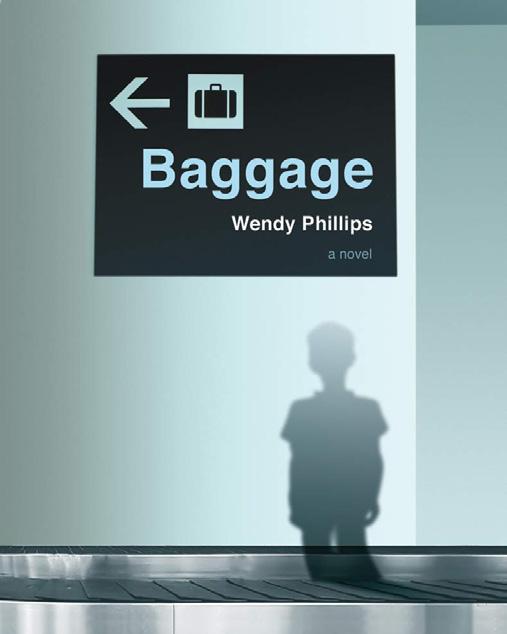
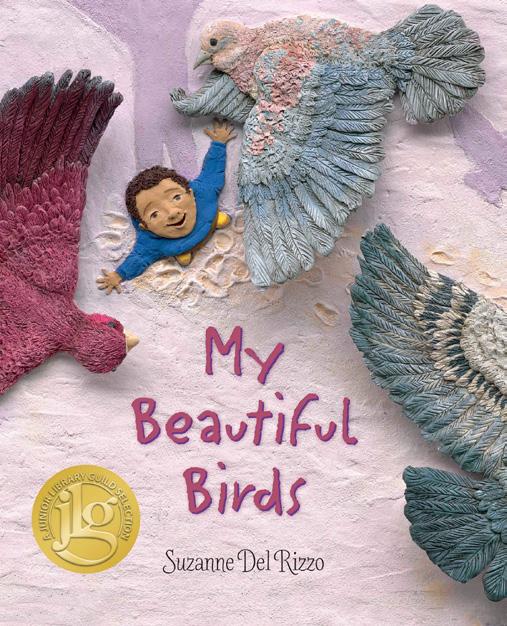
• Recognize and understand refugees as a global issue

 Stormy Seas: Stories of Young Boat Refugees by Mary Beth Leatherdale, illustrated by Eleanor Shakespeare (Annick Press, 2017)
My Beautiful Birds by Suzanne Del Rizzo (Pajama Press, 2017)
Ghost’s Journey: A Refugee Story by Robin Stevenson (Rebel Mountain Press, 2019)
Stormy Seas: Stories of Young Boat Refugees by Mary Beth Leatherdale, illustrated by Eleanor Shakespeare (Annick Press, 2017)
My Beautiful Birds by Suzanne Del Rizzo (Pajama Press, 2017)
Ghost’s Journey: A Refugee Story by Robin Stevenson (Rebel Mountain Press, 2019)
Students will demonstrate an understanding of:
• The wide range of emotions and experiences of people who move to a new and unfamiliar place
• The reasons people travel: relaxation, adventure, or work, and forced travel to seek safety or escape disaster
• The significance of voice in storytelling
• The importance of text forms in shaping meaning
The teacher will present to the class images of airports—baggage carousels, checkin desks, porters with luggage, travellers, lounges, etc., with a focus on diversity of representation. Ask students the following questions:
• What do you notice? What do you wonder?
• What does this make you think of?
• How do these images make you feel?
• Why do people travel?
• Why might people leave their homelands?
• What are some difficulties or challenges someone might face?
• What are some emotions or feelings that people may experience because of those challenges?
Make and share the list of answers through word cloud generating software like Mentimeter, by constructing a Jamboard or Google Sheet, or by using large paper and markers.
Distribute the first page of text from Baggage—Ms Nelson (3)— and read it together as a class.
• What do you notice? What do you wonder?
• How does the author telling the story through poems influence our understanding? (Word choice, imagery, word arrangement, font, white space on the page, etc.)
Using trauma-informed practice, share images or book/magazine covers depicting families in migratory circumstances: refugee camps, boats arriving on beaches, etc.

Beginning with picture books, discuss with students how we read a picture book, focusing on the importance of images and discussing form/text features.
Working individually or in pairs or small groups, students will read the picture books and do a one-minute rapid writing response on voice for each one: Who is telling this story? How might the story be different if there were a different narrator/perspective?
Have students share their books/ideas/perspectives with the class in a jigsaw situation.
Generate some common understandings of the idea of voice and power: Who is heard? Whose voice is missing from these stories?
Share the article Pandemic intensifies silent sorrow of Canada’s asylum seekers (Capital Current), or a similar article that includes personal accounts of social, physical, and mental challenges faced by refugees.
Individually or in partners, have students re-frame the storybooks from a different perspective.
Retell a part of one of the storybooks using a different medium: art, photography, music, poetry.
Share products in an online learning platform, gallery walk, or jigsaw activity (where students move between different groups, sharing information) in class.
Students create a blog/diary/journal/sketchbook/podcast to share their own voice and reflect on the experience of retelling the stories.
Use the chosen medium to document/reflect as a reading journal throughout the novel study.
• Books About Refugee Experiences (49th Shelf)
• I Read Canadian: Six books about the refugee experience (UNHCR Canada)
• Resource Links Highlights: Refugees and Immigrants (Canadian School Libraries Journal)
• 7 Canadian books to read on World Refugee Day (CBC Books)
To find more resources and adaptations for this lesson plan, visit teachmag.com/ great-canadian-books.
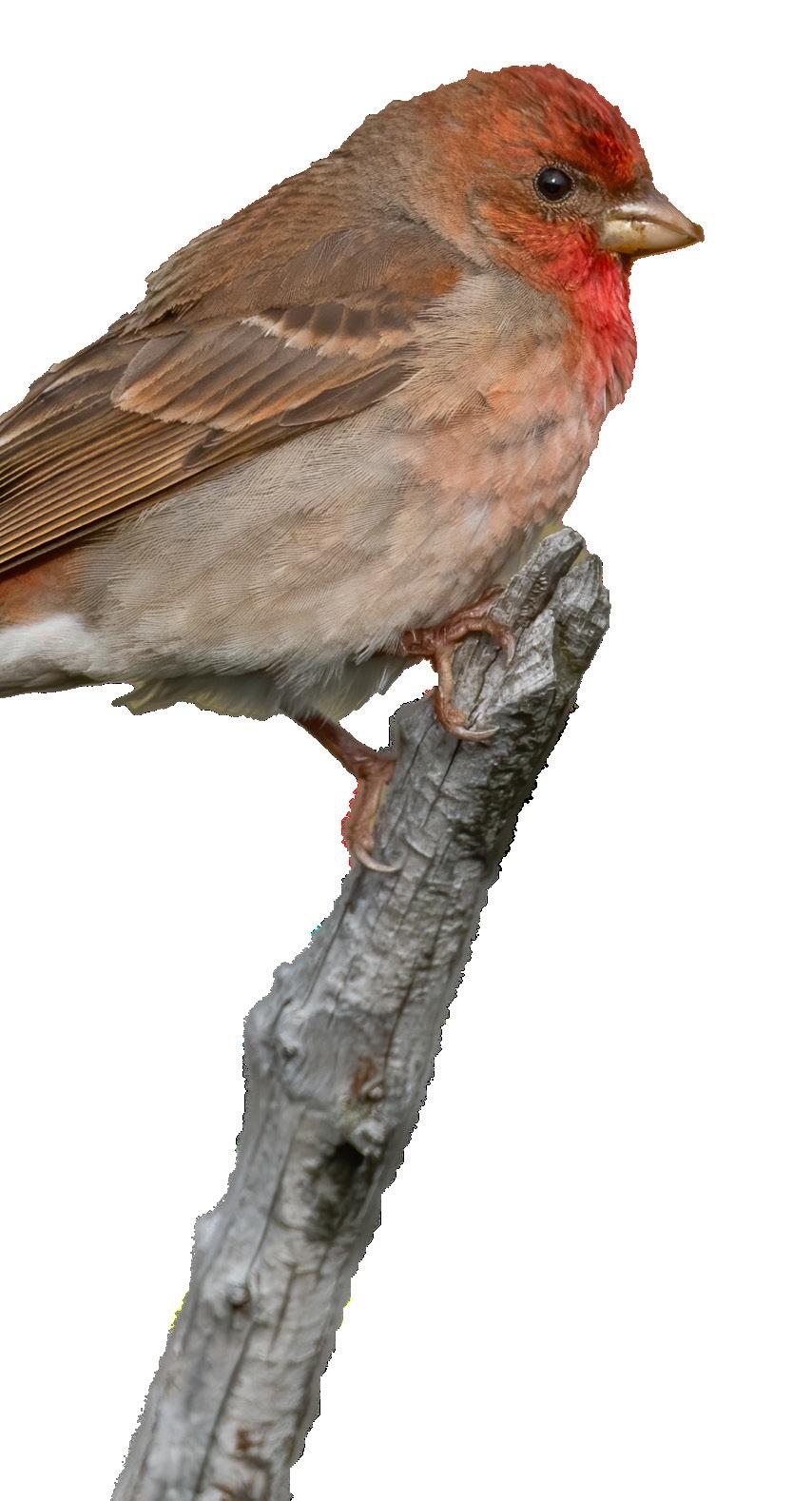
For the past nine years, Grade 6 students in Saskatoon, SK, have applied for one of 25 coveted spots in a special year-long program that sees them learning and growing with elders on a daily basis. This unique experience, called iGen, focuses on building intergenerational relationships; selected students will spend the entire school year in the iGen classroom, which is located in Sherbrooke Community Centre, a long-term care facility.
This exact program, delivered by teachers in partnership with Sherbrooke staff, seniors, and volunteers, is one-of-a-kind in Canada. However, the benefits of seniors and students connecting with each other is widespread. Whether through intergenerational cohousing, seniors volunteering in schools, or students volunteering in community care homes, socialization between older and younger generations benefits everyone involved.
In iGen’s case, the age range of 11-12 years is the perfect time for students to get started.
“Grade 6 students are often empathetic, open-minded, and caring enough to build relationships, but independent enough to do the work that needs to get done,” says Keri Albert, lead teacher of the program.
On top of providing housing for over 250 residents, the Sherbrooke facility also offers day programming for elders in the surrounding communities, and iGen students help out with whatever is needed. This could be simply offering assistance to residents who need help moving around the centre, or pitching in to set up a garden plot with an elder. Other tasks are less
Here are a few examples of the many curriculum targets that an intergenerational program can hit.
CAREER EDUCATION: Learn about the wide range of career opportunities at a long-term care home or community centre, from nursing and personal support to administration.
SCIENCE (BIODIVERSITY): Get outside for a walk, picnic, or gardening activity with seniors. Learn about the plants and wildlife in the area.
HISTORY: With elders, students research a topic and create a project or report. Research learning can go both ways—seniors can share traditional research skills and knowledge or stories, while students can share techfocused research skills.
READING, WRITING, AND LANGUAGE: There are many opportunities for group discussion, individual speech-writing and presentation, personal journal entries or reflections. You could also create a spelling bee with seniors’ involvement, have elders read curriculumrequired novels to students, or vice versa.
typical: the facility has a lot of animals, so students are often involved in pet care.
In many cases, the immediate benefits for the seniors are perhaps more obvious. “But it’s important to [also] see [the] benefit[s] for the kids, not only the elder,” Albert says. The students develop a sense of responsibility, hands-on skills, or even some physical strength through their efforts.
Besides helping elders, intergenerational learning can also provide a plethora of curriculum connections, along with opportunities for student-led inquiry projects that can be shared with seniors. For example, at Sherbrooke, students can create artwork with elders in the facility’s art studio, or learn more about Indigenous topics by conversing with Sherbrooke’s Indigenous Elders. Fun-filled projects like building board games or small-scale architecture also make good elder-student partner activities.
Other curriculum targets can be met through discussion and personal reflection. A simple conversation with a senior about their work experience provides an opportunity for students to gain career knowledge. For students in the iGen program, they see first-hand what long-term care requires, what is involved in the day-to-day—something that is usually separated from kids in our society. So, by simply spending time in a long-term care residence, the teacher can open up conversations about aging, medical conditions, and health sciences.
Of course, it is easy to see how things like responsibility, life skills, and hitting all the curriculum targets are important. But one of the biggest benefits of intergenerational socialization is the connections kids make with the elders. Students not only develop new friendships, but they also get the rare opportunity to gain insight, perspective, and the wisdom of life lessons learned through decades of experience.
That chance to share with a different generation is often a motivating factor for elder-student interaction. Case in point: the Seniors for Kids Society is a volunteer program where seniors go into schools to work one-on-one with a student. Based in the Chochrane, AB, area, Seniors for Kids facilitates 13 weekly programs of intergenerational connection.
“Some seniors have grandkids, some don’t. But they all want to give back to the younger generation and have an opportunity to share knowledge,” says Lynn Noble, the program’s coordinator.
The seniors who volunteer in the program are lovingly known by everyone as the “school grandparents.” Those who are interested simply apply and submit a background check. They can choose the elementary or high school level, and then are matched with a student. Once a week, they meet with their partner at the school. The pair might work on a craft or project, or simply play board games.
“The activities are [planned and] organized by the school’s coordinator, so [the volunteers] just show up and have fun,” says Noble. “Our volunteer retention rate is very high—many have been with the program for ten years.”
Seniors for Kids has two other weekly programs where students volunteer at a care centre or a seniors’ community centre. Activities range from group gardening and bingo to student-led tech classes or senior-led cooking classes.
These programs all provide opportunities for seniors to tell their stories and for students to learn from firsthand sources. “One World War II veteran brought his two war medals,” Noble adds. “That was really something!”
As they learn and grow from members of a different generation, students also improve their social skills and build up their self-esteem.
“One thing [that] all students report is having gained a certain level of confidence during this experience,” say iGen’s Keri Albert. “They could safely leave their environment and meet new people and do things outside their comfort zone, and it all turned out okay.”
She also notes that, “Parents say the child who starts in September is very different than the kid who leaves in June. They experience inner growth.”
A lot of that growth comes down to connection through various forms of communication, which is not always easy to get a handle on. Eric Anderson, communications leader for Sherbrooke Community Centre, notes that about 60 to 75 percent of residents at Sherbrooke have a cognitive challenge, like dementia or recovering from a stroke. Over time, the students learn all their different communication styles.
“It takes time and effort and focus,” says Anderson, “But the kids make it look easy!”
And at the end of the day, that’s what intergenerational learning is all about: “Finding ways the kids can shine, [as well as] ways the elders can share and shine,” Albert says. She tries to see each interaction as an opportunity for growth. “If you’re non-verbal... or if you’re a 10-year-old who is so shy [you] don’t know what to say to a stranger, everybody has a way to shine.”
Students and seniors can share so much with each other, often without meaning to in the first place. The residents enjoy “having a younger generation around… to share stories and life experience [with],” says Anderson. “[It is] amazing [to see] the amount of energy and spontaneity the kids bring.”
As for the kids themselves, an intergenerational learning program can be a beneficial way to meet their socialemotional needs (especially for those students who don’t have grandparents nearby). As Noble explains, “We hear from some kids who may struggle academically, but they are sure to show up to school on ‘Seniors for Kids day.’ That attention and connection [the seniors bring] is really something special.”
Albert agrees. From a facilitator’s viewpoint, the results and relationships she has witnessed were well worth the effort. “If you want to renew your passion and faith in education, do intergenerational work,” she says. “It’s the most powerful, gratifying, and rewarding thing to experience. I’ve learned so much as a teacher, and as a human being.”
MARTHA BEACH lives and works in Toronto as a freelance fact-checker, editor, and writer for a wide variety of publications. When she’s not working, you’ll find Martha on her yoga mat or hanging out with her daughter and husband.
For tips on how to start your own program, check out Welcome to iGen, a podcast by Keri Albert and Eric Anderson.

I’ve always found that Visual Arts classes hold immense power within the school community. Although it’s often written off as “just an elective,” the truth is that the practice of art within schools is of the utmost importance. Not only does it make space in a student’s day for creativity and provide a break from academics, it can also serve as art therapy or offer a chance to focus on something even bigger.
For the last few years, I have run an Art Activism class at the secondary school where I teach in British Columbia. This class is based on one big idea: art is a powerful tool for educating the public and for encouraging social change. Over the course of the semester, students learn more about a social justice topic in-depth (such as homelessness or Black Lives Matter), including the history of the issue and its current events, but they also learn how to break down personal bias. I emphasize at the beginning of the course that we all come into the classroom with bias; it is a part of life, but one that must be addressed with critical thought.
I also acknowledge—in the classroom, and for the purpose of writing this—that my position within the classroom and as a writer is one of privilege (I am a white female teacher of Eurocentric heritage). My aim is to elevate the voices of minorities and advocate for
their causes, and I make mistakes. As Maya Angelou said, “Do the best you can until you know better. Then, when you know better, do better.” I am constantly learning and trying to do better as I go, and this course is a summation of me trying to “do better” (and I am still learning).
How we think about what we think, and how open we are to changing our minds and perspectives are two imperative topics that I address with the students. To illustrate these points, I have each student take on a subtopic within our larger one. They then must become an expert on it and present to the class their learning, along with an activity for the other students to do. There are discussions and questioning and safe sharing of everyone’s perspectives. The deepest and most beautiful learning is done in those moments— students debating and sharing their thoughts and experiences, shifting others’ minds into new spaces while also challenging norms.
Subtopics that students have explored in the past have included: taking a look at the housing market disparities that BIPOC people face; a history of music through the lens of how BIPOC individuals inspired different genres; comparing prison institutions around the world; following generational trauma through Indigenous people of different ages, and more.
After this in-depth look at bias and how to practice critical thinking, students then delve into art making. They’re each given a large-scale canvas with the assignment of creating a work that explicates a facet of the social justice issue we’ve discussed. The theme of their piece may derive from their chosen subtopic project, or sometimes even from the personal stories of people who’ve been affected by these different causes. One year, a student did not hesitate to paint a close-up portrait of what they thought George Floyd may have looked like on the ground right before his death, surrounded by clouds of happy memories—in juxtaposition with the final moments of his life.
After each student creates a visual representation of their learning that resonated with them, their works are displayed publicly in order to educate and generate discussion among the community. The paintings are shown in my city’s local art gallery for two weeks and, during this time, the public is invited in to take a look at the artwork—often at the behest of the students, who generate a lot of excitement and publicity for this.
Though often intimidated by this task at first, the students come to wrestle with and ultimately love their paintings. Months of hard work go into these art pieces to have them ready for display. Many times, after visiting the gallery and seeing their work on the wall, I’ve heard students say: “I didn’t think I could do this, but I’m so proud of myself now.”
Recently the University of British Columbia’s Art Justice class asked to partner with my course, as the core of what they do is very similar to Art Activism. For this partnership, we took on the topic of the over-incarceration of Indigenous peoples.
Art Justice works together with Corrections Canada to provide Indigenous inmates with materials and supplies for art therapy, and advocates for the overrepresentation of Indigenous peoples in Canadian prisons. My students took an honest look at Canada’s history, including residential schools and generational trauma. They got to see art therapy pieces made by the inmates, then reflect on them and make their own artworks in response.
For this year’s project, the Indigenous incarcerated individuals each painted one-half of a large-scale canvas that the students later received and finished, a unique piece co-created by inmate and student. Art Justice facilitated the transport of the canvases from the inmates to the students, so that both groups were kept involved and safe. These works—started by someone in prison, finished by a student in high school—encompass learning, reflection, bias scrutiny, and advocating for a greater cause.
These canvases were also displayed at our local art gallery and the public was invited to gain insight into the justice system and how it often fails Indigenous peoples. And this time, the students’ works won’t end there; they will go on to be shown at other schools and universities as well.

For this project, I noticed that the students did not so much dwell on their success as they did on the cause itself. When they invited people in to see their works, they recognized that they were also inviting gallery-goers into discussions

about the topic. Many students found immense meaning in this and stated that it helped them understand how art can truly make a difference.
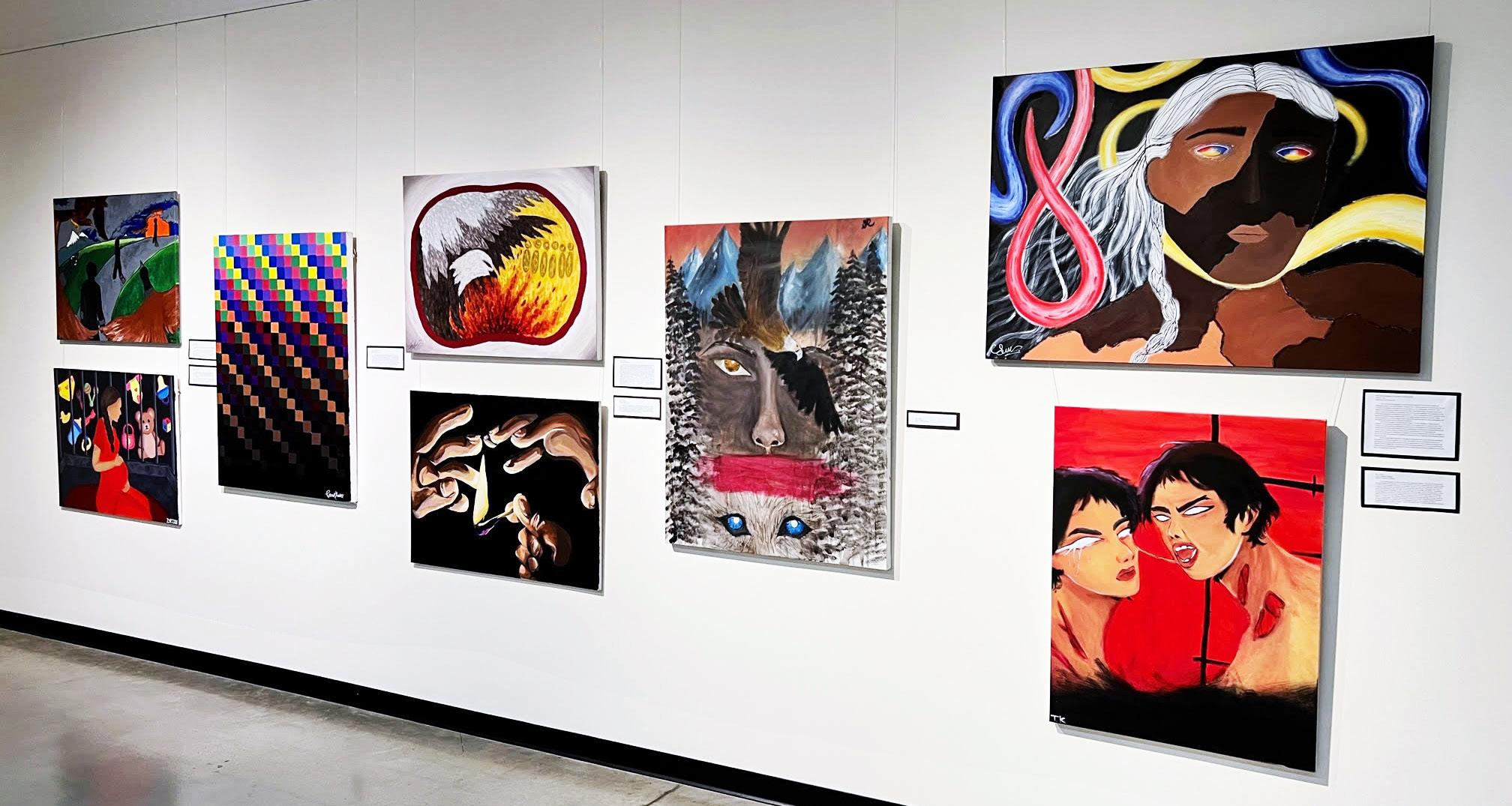
Over these years of teaching and building the course, I have found that even when students aren’t painting, the conversations around activism and social change continue.
An example of this is a discussion that we had once in class about Indigenous healing villages—low-security prisons where the inmates participate in Indigenouscentered ways of healing, knowing, and being. NonIndigenous inmates wanted to join these healing villages, and thus the question was posed: Should non-Indigenous people be allowed into healing villages to undergo Indigenous practices of rehabilitation into society?
Given the history of how Indigenous peoples were treated, it would make sense for my students (many of whom are Indigenous) to say that non-Indigenous people should not be given that privilege. However, the response from the whole class was unanimous: everyone should be welcomed into the ways of Indigenous peoples, because their approaches to healing are holistic, addressing the whole life and being of the person who needs healing. That could truly lead to rehabilitation and reintegration into society without reoffending. Student
after student reiterated the importance of exposing non-Indigenous people to an Indigenous way of being and healing, to promote the health and goodness of Indigenous approaches to wrongdoing.
This welcoming and inclusive attitude was brought on by students having previously done the hard work of addressing their own biases. In a world where people are increasingly divided and polarized against each other, it takes intensive inner work to address bias and be willing to change perspective and think in a truly inclusive way. In teaching and engaging in these discussions with students, I, too, have to constantly address my own ways of thinking and being. I learn from them constantly.
At the end of the day, Art Activism allows students to tangibly see how their creativity, thought, and hard work not only gets their artworks in a gallery, but also inspires discussion about important topics. It’s my hope that this sense of purpose is only the beginning: if students feel as though they are making a difference beyond classroom walls just from taking one course, then they will feel empowered to continue to advocate for others and for change—whether that be via art or otherwise.
NIKITA GRIFFIOEN currently teaches in Abbotsford, BC. When she’s not in class, you can find her traveling, snowboarding, surfing, reading, or making art.
Read more about Nikita’s work with Art Activism here: • “Abbotsford Senior Art Activism class shines light on Indigenous over incarceration”If you’d like your furry or feathered friend to be featured, visit our website and check the submission guidelines.

Location: British Columbia, Canada
Parent: Noemi M.
Cuddly, Silly, Springy Legs
Location: Ontario, Canada
Parent: Megan P.
Gentle, Outgoing, Playful
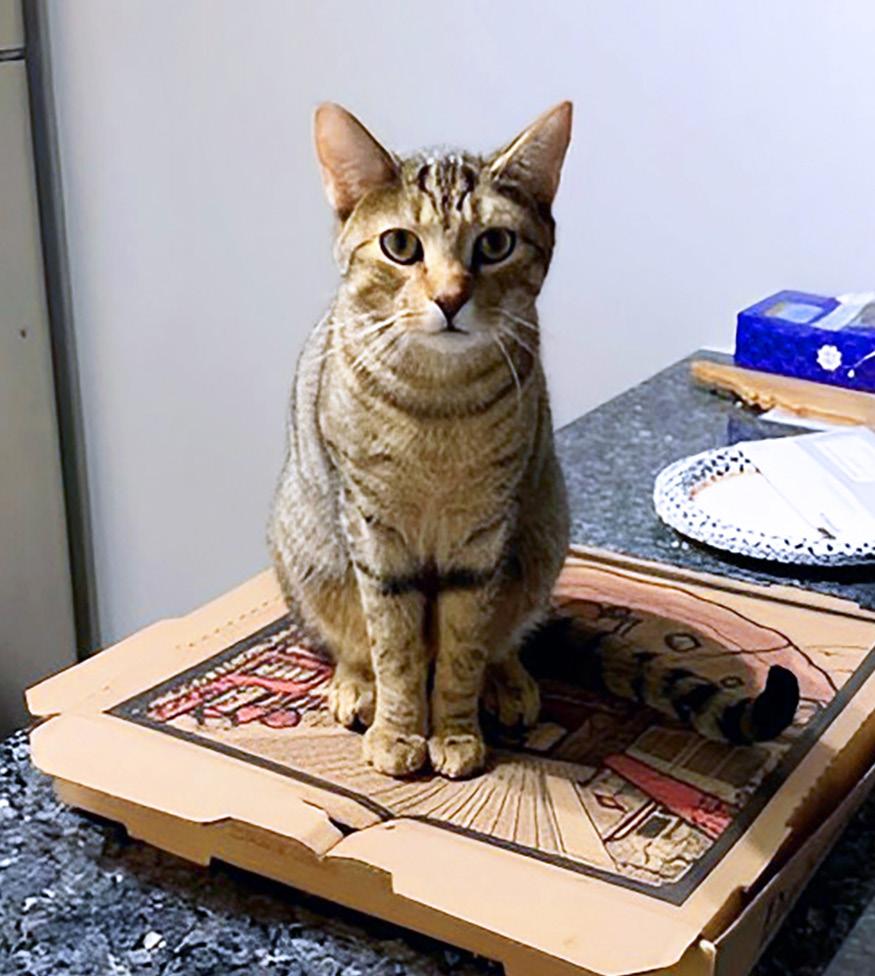
Location: North Carolina, USA
Parent: Eric G.
Calm, Loving, Sweet
Location: Pennsylvania, USA
Parent: Hadley Z.
Determined, Smart, Sweet
During COVID, Wynnie would often feature on video calls with students. She was a puppy back then, and the students loved watching her grow! She brought them so much joy, and helped them connect with each other. Now that classes are back in person, students still like to hear Wynnie stories and always ask to see pictures of her.

 Hugo | 3y | Goldendoodle
Mac | 5y | Golden Retriever
Miles | 3y | Tabby
Hugo | 3y | Goldendoodle
Mac | 5y | Golden Retriever
Miles | 3y | Tabby











